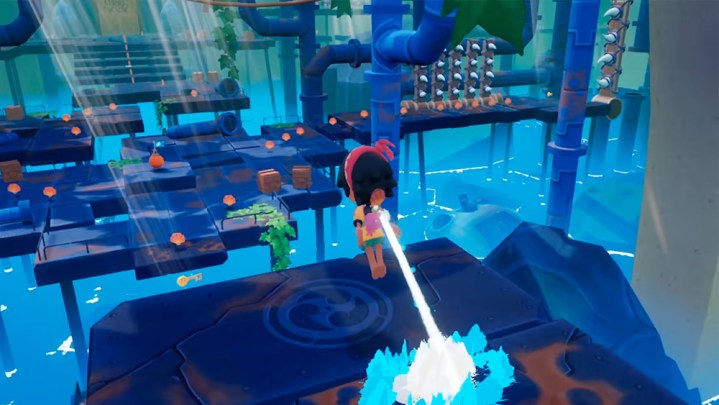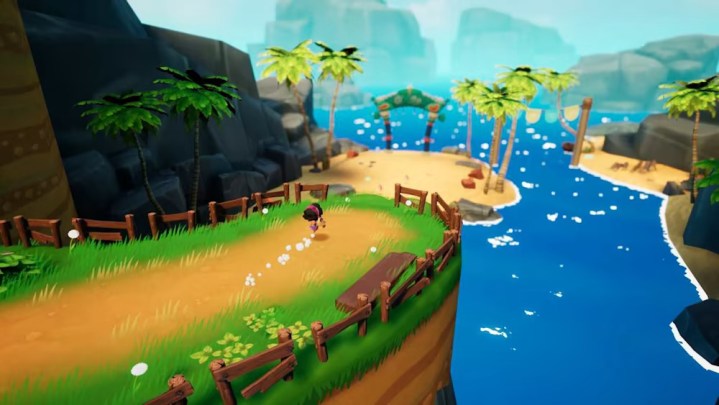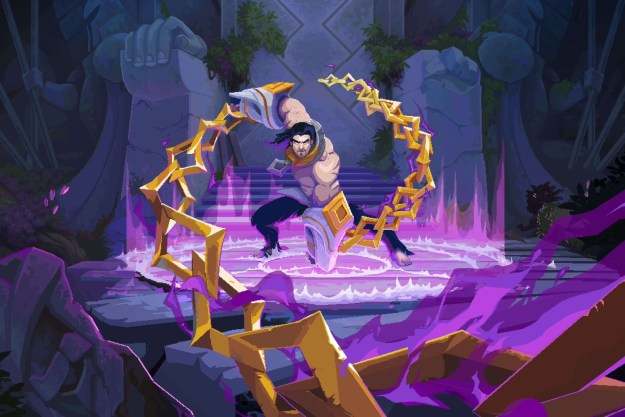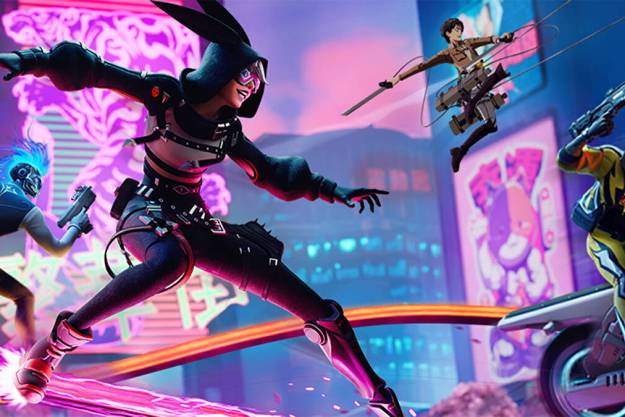My adoration for exploring and collecting in games is well-known to anyone who has ever heard me wax poetic about Soulslikes. Surprisingly, though, it’s rarely the punishing bosses or deep role-playing systems that suck me in the most — it’s the “Aha!” moments of finding a well-hidden item on a ledge most folks would never notice or stumbling upon an illusory wall that leads me somewhere wholly new. But this love of thoroughly examining levels and finding their secrets was first sparked in me with the significantly brighter and cheerier platformer genre almost three decades ago. There’s really nothing that makes me happier than becoming entranced in a happy, colorful adventure that lets me sink back into that childlike wonder I experienced all those years ago.
That’s why I’m always thrilled to find indie games like Chibig’s Koa and the Five Pirates of Mara that genuinely capture the playfulness of the titles I grew up with. Similar to other lovely platformers like New Super Lucky’s Tale or A Hat in Time, it may lack some of the AAA flourishes of the genre-defining Super Mario Odyssey, but it makes its case by flawlessly nailing the fundamentals: a memorable and lovable mascot, diverse level design, tight controls, and a cohesive artistic vision. That attention to such core principles keeps it from suffering the same fate as the dozens of low-budget releases each year that often suffocate beneath the weight of their own ambition.
Koa and the Five Pirates of Mara truly understands what makes a 3D platformer tick. And after spending around six or so hours completing everything it has to offer, I can enthusiastically recommend this chill summer game for both hardcore genre fans and families looking for something that anyone in the unit can easily pick up and play.
Sometimes, basic is best
Though not technically a sequel in the traditional sense, Koa and the Five Pirates of Mara takes place within the same tropical setting as 2020’s Summer of Mara — a cozy game that saw players explore an archipelago while crafting, farming, and engaging with locals. And while this new entry in the series still stars the ever-lovable Koa, a determined eleven-year-old girl who loves to explore the sea on her boat, it takes a much different approach to gameplay, trading those relaxing tasks for some basic 3D platforming.
The word “basic” may sound unappealing at first glance, but it’s actually that simplicity which captured my heart. The identity crisis that often plagues modern platformers trying to stand out among their contemporaries isn’t at play here. Instead, Chibig has crafted a focused, tightly-tuned adventure that’s all about the essentials: running, jumping, and collecting. Koa and the Five Pirates of Mara wears its restraint as a badge of honor.

I love deeply creative experiences within various genres, but I’m also all about a game that’s comfortable with just zeroing in on its strengths, so I can’t stress how much I love that Koa’s journey almost never tries to do something that could set it off course. It’s a game that is content with letting its wide selection of island locations serve as its outlet for trying new things, each offering unique aesthetics and overarching goals, rather than asking you to endure wacky new gameplay overhauls or varying types of minigames that might disrupt the flow of the game just for the sake of inventiveness.
I wouldn’t want every game I play to be so breezy, of course, but knowing that I didn’t have a checklist of nonsense to do in a menu was refreshing, allowing me to sink into my couch for two evenings and let Koa and the Five Pirates of Mara take me away to a tropical wonderland without ever once feeling stressed or as if my time had been mishandled. I didn’t mind that the core platforming loop changed so little from beginning to end — I was just happy to see what place I’d visit next.
Relentless optimism
That’s not to say there’s nothing to do outside of all the jumping and collecting; just that most of it is optional. Returning to the small coastal town of Qälis after completing each island lets you check in with its likable cast of characters who are always happy to chat with Koa about their lives. Some accept her seashells (the game’s collectible currency) in exchange for some fashionable new clothes or upgrades for her boat that let her move faster or jump over rocks while she’s sailing around the archipelago. But more than anything, their enthusiasm just drives home the game’s central theme of relentless optimism.

Even the “villains” end up being friendly folks that rely on Koa to repeatedly use her skills to get them out of jams and seem to genuinely appreciate her for it. While these pirates have sent Koa on a journey around the islands to earn stolen items back, she’s happy to scale a snowy mountain to reset a giant malfunctioning robot for a duo of these scallywags or infiltrate a prospecting station filled with lasers and conveyer belts in order to cut the power for another. The idea of Koa being the fixer around the archipelago is played to its fullest potential throughout the game’s Saturday morning cartoon story which is determined to remind us that life is better when we all just get along.
It’s not that easy in real life, but in Koa’s idyllic summer realm, we can pretend for just a little while.
I get the sense that Chibig has really found its footing here around and given Koa the game she deserves. Koa and the Five Pirates of Mara may not reinvent the genre, but its sun-soaked island adventure left me hoping that we get to see more of its perpetually upbeat world and ever-lively citizens in the future. While we wait to see what everyone will get up to next, though, I really think you should hop aboard Koa’s boat and lose a few afternoons in a tropical paradise. Just don’t forget your sunscreen.
Koa and the Five Pirates of Mara is available now on PS4, PS5, Xbox One, Xbox Series X/S, Nintendo Switch, and PC.
Editors' Recommendations
- Visions of Mana paints a promising picture of the RPG series’ return
- Another Crab’s Treasure is an approachable Soulslike with a comedic twist
- You can play as Resident Evil 4’s Leon Kennedy in Tekken 8 … sort of
- Star Wars Jedi: Survivor’s arachnophobia toggle removes all spiders
- The best skills to buy first in Star Wars Jedi: Survivor




